Behind the Scenes with Deep Look: Caddisflies
From the amazing camouflage of pygmy seahorses to the unseen six needles a mosquito uses to suck your blood, to the sticky underwater tape of the caddisfly, Deep Look, KQED’s YouTube science series, brings you science up close in just three minutes. How do they do it?
“We look for a story from nature that dramatizes a big science idea, something that’s relatable to people, but at the same time, alien,” says Elliott Kennerson, one of Deep Look’s producers. “Oh, and it has to be small.”
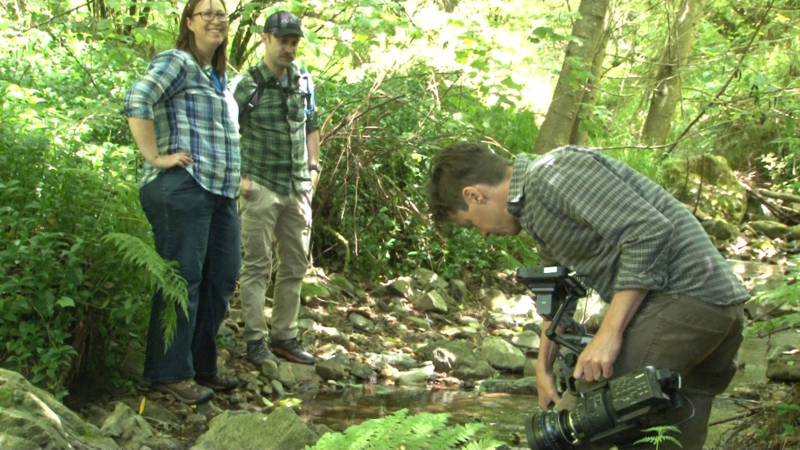
Deep Look films in various locations from redwood forests and streams, to deserts and oceans. “Shooting in nature is always a challenge,” says Joshua Cassidy, Deep Look’s cinematographer and lead producer. “From a technical point of view, you’re taking expensive electronic and optical equipment out into inhospitable environments. Filming wildlife is always unpredictable. Some days the banana slugs or hummingbirds can’t be found. It’s all about flexibility and persistence.” To film the caddisflies in their natural habitat, the Deep Look crew brought along a caddisfly expert, Patina Mendez from UC Berkeley, to help identify the correct species.
Sometimes the producers have to take matters into their own hands and bring the wild inside. For Deep Look’s episode about scorpions in the Sonoran desert, they filmed inside a terrarium at the California Academy of Sciences in San Francisco. For the caddisfly episode, they set up an aquarium in an empty office at KQED. They also had to bring water, stones and gravel from the stream where the caddisflies live and wait 24 hours for the water to clear up before they could film. This was all done with permission from the California Department of Fish and Wildlife.
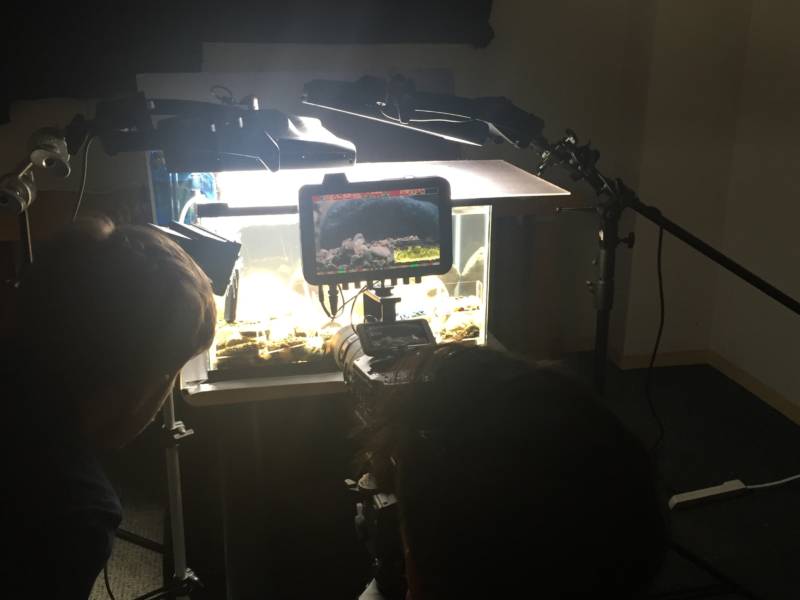
“Deep Look is shot in Ultra High Definition (4K) but what really gives the show its look are the lenses,” says Cassidy. “My favorite by far is the Canon 100mm f/2.8 macro lens. By attaching to different researchers’ microscopes, we’re able to delve way beyond what’s visible to the naked eye, like watching in detail as a mosquito dug its proboscis into a researcher’s forearm, drank her blood and pooped out crystal clear droplets of water to make room for more blood.”
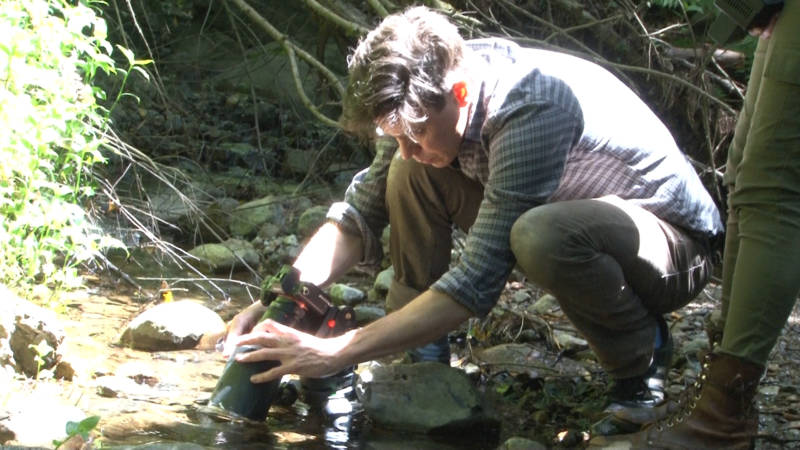
“Each episode offers new challenges and chances to get creative when it comes to filming,” says Cassidy. “The hard thing to do in the caddisfly episode was to film them through the water. The little ripples in the water cause distortion, so I used a plastic tube to put in front of the camera lens to get rid of that distortion.”
Shooting macro video in the studio especially requires a lot of light. “Sometimes, the head of an insect will be in focus, while the rest isn’t!” says Kennerson. “So you have to shine bright spots on what you’re shooting, which people do with microscopes, of course, but those specimens are dead. Live animals of any size don’t like bright light, and they don’t like too much heat.”
“We don’t want to fry our guests, so we film with cool LED lights.” says Cassidy.
“The ultimate goal is for them to just act normal!” says Kennerson.
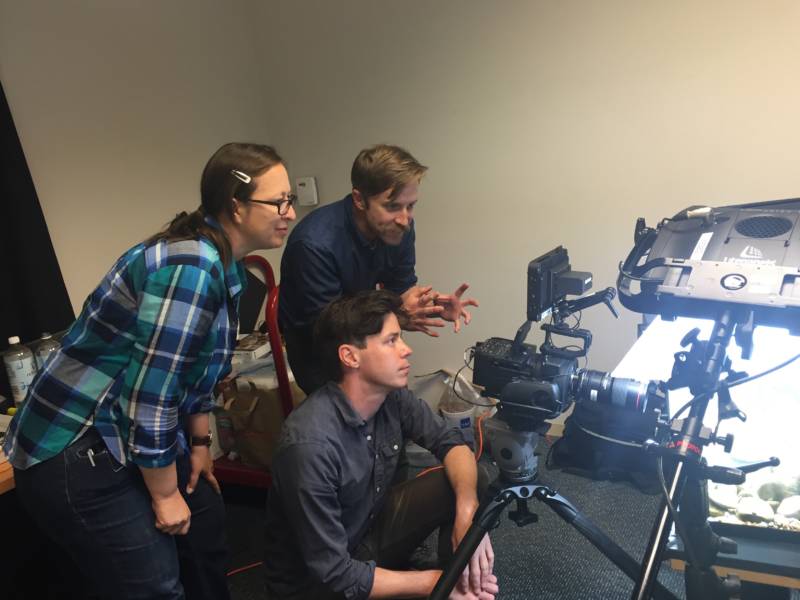
Deep Look episodes take about six weeks to produce from start to finish, and usually 2-3 hours of footage is filmed for a three-minute episode. “That’s a high ‘shooting ratio,’ says Kennerson, “A lot of that is because we run the camera in hopes of catching some critical animal behavior once conditions are right.”
Ultimately Deep Look is all about lenses, light and a bit of luck. “It’s really awesome when it all comes together and you know you have a show and you’re going to be able to give the viewers something they just can’t see any other way.” says Kennerson.
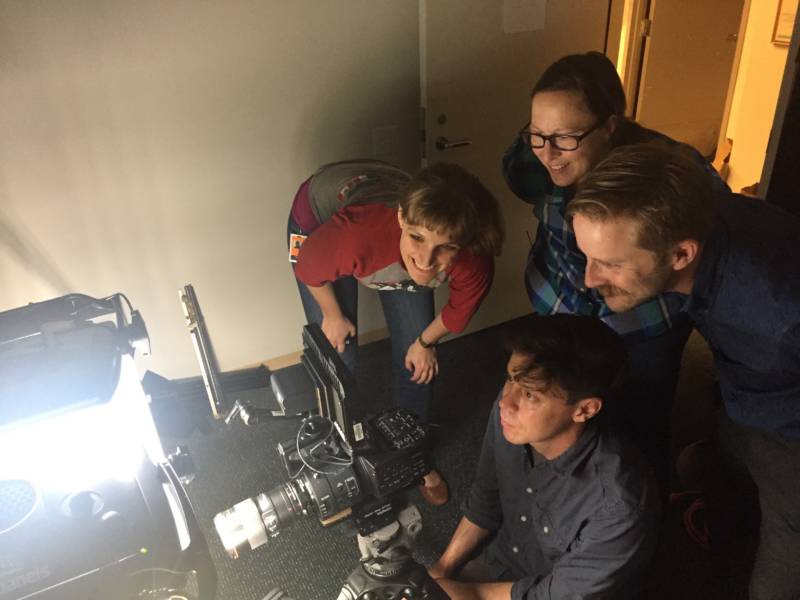
Check out the Deep Look caddisfly video, “Sticky. Stretchy. Waterproof. The Amazing Underwater Tape of the Caddisfly.”
Subscribe to Deep Look on YouTube and watch new videos twice a month.